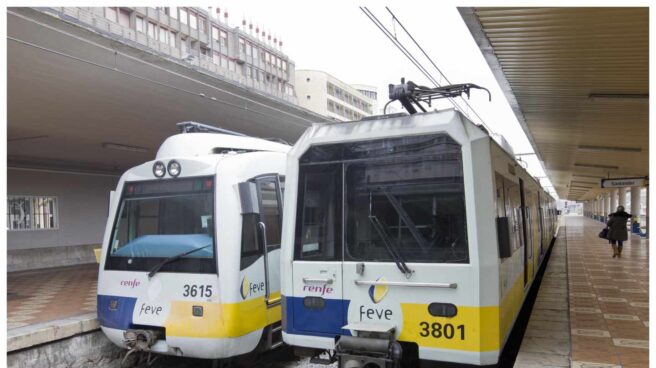

Feve train in Santander.

Who is to blame for the fact that the 31st gauge trains ordered Renfe manufacturer CAF in 2020 they haven’t left the factory yet? This is what the internal audit at Renfe and Adif, who have already left their posts for two process-related positions, is trying to figure out. Convoys intended for narrow gauge lines that pass primarily through populated areas such as Asturias And Cantabria They have yet to become a reality due to a measurement issue that has delayed their design and assembly since they were handed over to the Basque manufacturer in 2020.
Company that works Isaiah Taboas in 2019 held a tender for the renewal of part of the rolling stock of the former state-owned company Feve, which is now integrated into Renfe and Adif. In theory, he sent the specifications to CAF, as did the rest of the rolling stock purchases. To do this, he referred the manufacturer to the Declaration of the Adif network, where reference is made to the so-called “Galibos Railway Instruction” (IFG), which includes formulas for their calculation.
But those schemes that are used for new and repair work are not applicable to the narrow gauge network and, moreover, to its narrow tunnels dating back even to the 19th century. However, documentation with specific measurements for the aforementioned tunnels was not included, rather, in theory it would be in line with CAF to obtain said information.
The manufacturer (Construcciones y Auxiliar de Ferrocarriles) became aware of the situation early in the design phase and warned Renfe that trains might not pass through certain infrastructure points. Work has since been put on hold until a solution can be found that involves using existing trains to design new ones.
In recent days, the case has gained public and political resonance. Transport Minister, Raquel Sanchezannounced over the weekend the dismissal of two public companies to remove responsibility for the delay against which the President of Cantabria rebelled, Miguel Angel Revilla. “This is an unspeakable failure. They have to roll their heads, ”the TV presenter complained.
The Ministry acknowledges the delay but denies that it is a waste of public money. “No train has yet been produced and no government spending has been made or incurred in relation to this situation,” they insisted on Sunday in a ministry note. Following the CAF warning, a working group was set up with all stakeholders to find a solution to the problem. “The error implies a redesign that involves a delay in production,” they say from Transport. The process can take another two to three years.
Source: homemade. IE Graphics
After internal discussions between Renfe and Adif involving CAF and the Railway Safety Agency, three possible options were proposed. On the one hand, the use of dimensions with real information from Adif was considered, but it was concluded that this decision would entail the production of a train with smaller dimensions than current trains, which would be detrimental to passenger service.
On the other hand, it was proposed to adapt the infrastructure at points where there are problems with the passage of trains. But the long and costly process forced the idea to park. It was also supposed to apply an exception at problem points, authorized by the Railway Safety Agency, or to issue a new special instruction on metric gauge.
Finally, the decision taken by the parties involves the use of the so-called “comparative method”. Although it is provided for by European regulations, it is not regulated by the Spanish standard, so it will have to be adapted. We are talking about using as the basis for the design of the train, which currently runs on metric gauge lines. Manufacturer CAF has assembled various models for Feve in the past.
The Basque firm is barred from deciding on the procedure. The company has a large backlog of orders and will now have to commission a specialized company to design trains using the aforementioned comparative method. Renfe will provide a train to carry out the measurement and monitoring work of the project, which You will need to amend the contract.
In 2014, a more serious case occurred in France. SNCF ordered 2,000 regional trains that were not compatible with the platforms of many stations on the network. Unlike the Spanish narrow gauge trains, the problem was discovered when they were already assembled.
This required reforming the platforms of over 1,000 stations due to communication problems between the SNCF subsidiary in charge of the network and the subsidiary in charge of commercial passenger traffic.
Source: El Independiente